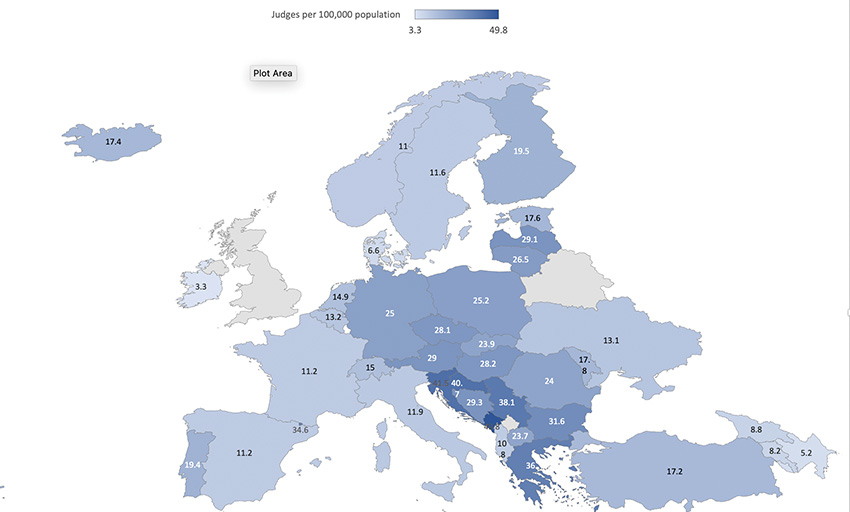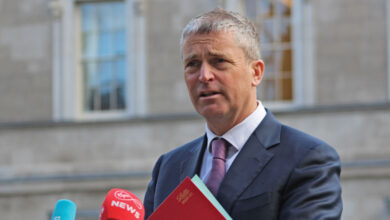Over 40 new judges to be recruited

The Courts Bill 2023 plans to increase the number of judges in Ireland from 173 to 217, a move that will address Ireland’s status as the European state with the lowest amount of professional judges per capita.
In February 2023, then-Minister for Justice Simon Harris TD brought forward the Courts Bill 2023, which proposes increasing the number of sitting judges in the Court of Appeal, High Court, Circuit Court, and District Court, reflecting the recommendations made by the Report of the Judicial Working Group and the OECD report Modernising Staffing and Court Management Practices in Ireland.
Harris stated: “We intend to increase the number of judges in two phases, beginning with 24 additional judges this year and a further 20 judges subject to an assessment of the impact of the initial appointments. This will ultimately increase the overall number of judges from 173 to 217.”
The Courts Bill 2023, enacted in May 2023, confirms the Government’s plans to take the recommendations of the reports into account and increase judiciary numbers in the State. The changes will see the number of Court of Appeal judges increase from 15 to 17; High Court judges from 42 to 48; Circuit Court judges from 40 to 45; and District Court judges from 20 to 28.
Stating that the increases in the number of Circuit Court and District Court judges is “particularly welcome”, the Oireachtas Library and Research Service (OL&RS) says that the Judicial Working Group’s (JPWG) report notes that the total number of ordinary judges rose by 21 per cent in the last decade, almost double the rate of the population increase of 12 per cent and largely in line with the increase of 24 per cent in public sector employment numbers. Despite this increase in the overall number of judges, the increase occurred entirely in the Superior Courts, which experienced a 76 per cent increase in judge numbers, while there was no increase in the District Court or Circuit Court in the last decade.
The need for the increase in the number of overall judges in Ireland is made plain by the EU Justice Scoreboard 2022. As is noted in the OL&RS publication, Increasing the Number of Judges in Ireland, the scoreboard recorded that in the four years recorded (2012, 2018, 2019, 2020), Ireland consistently records the lowest number of judges per 100,000 inhabitants in the European Union. Top of the pile, with the most judges per capita, are Slovenia, Hungary, and Luxembourg, while Denmark, Malta, and France are next to Ireland at the bottom of the standings.

According to the European Commission for the Efficiency of Justice’s (CEPEJ) report evaluating European judicial systems, published in October 2022, Ireland has 3.3 professional judges per 100,000 inhabitants, making it the lowest of the states included in the ranking, with most having between 10 and 30 judges per 100,000, and only Scotland (3.7) and the North (3.9) recording similar figures. The European average is 17.6 judges per 100,000 people.
Prior to the publication of these figures, Ireland’s lack of judges per capita was already being remarked upon by European observers, with a 2021 European Commission report stating: “The number of judges remains low and the resources available for the training of judges appear limited. The number of judges per inhabitant remains the lowest in the EU, which could also affect the efficiency of the Irish justice system. While the Government has committed to review the numbers and types of judges needed to ensure the efficient administration of justice over the next five years, more immediate measures might address concerns also raised by stakeholders.”
The Government requested that the OECD undertake its research in order to compare the number of judges in member states, with the report that was returned recommending an increase in the number of judges by between 36 and 108 extra judges. The assessment calls for more judges at every court level and identifies the need for an average minimum increase required of around 26.2 per cent. “This need may be exacerbated by the impact of upcoming legislative changes, such as the creation of new family law courts,” the OL&RS states.
As the Government came to terms with these issues, Minister for Justice Helen McEntee TD established the JPWG in order carry out an in-depth assessment of medium- to long-term judicial requirements, resulting in the group’s report, which returned 50 recommendations.
The key recommendations relating to the number of judges, which the Government has accepted, are that the recruitment of additional judges be split into two phases, with 24 judges to be recruited in the first phase and 20 in the second, making a total of 44 additional judges recruited. It is stated in the JPWG report that phase one should begin “as soon as practicable” and phase two before the end of 2024, with additional numbers in further phases to be determined by a review of judicial needs up to 2028, to be carried out in 2025.






